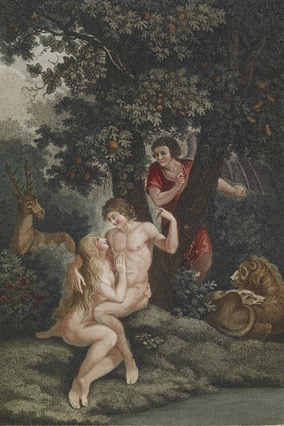If Art Could Tell: Illustrated Epics
Few poems have been more fruitful stimuli to artists than Paradise lost. The poem’s abundant variety of imagery and espousal of a Christian conception of the universe that was long hegemonic in the West, together with the high proportion of the literate population that could be assumed to be familiar with Milton’s text, all made it an attractive store of subject-matter for artists. The many sets of engraved plates commissioned by publishers played an important role in the development of English book illustration, and to these may be added large-scale oils on canvas for exhibition, finished watercolour studies, informal sketches and drawings, motifs for the decorative arts, and even sculpture: in 1817 ‘Satan in Council, a design for the end of a garden walk’ was displayed at the Royal Academy. The composition of Paradise lost itself became an established genre subject, the earliest depictions of Milton dictating the poem being traced to the eighteenth century.
 |
Adam and Eve observed by Satan: Paradise lost, Book IV, engraving by Gautier
after Jean-Frédéric Schall (Paris, 1792). CCA.48.31 |
 |
Adam, Eve and the angel Michael: Paradise lost, Book XII, engraving by Francesco Zucchi after
Vitorio Bigeri (Verona, 1742). Lib.3.74.1 |
 |
Satan awakening his legions, the illustration by John Baptiste de Medina to Book I of Paradise lost ( London, 1688). Y.7.2 |
|



